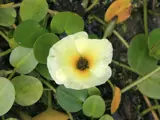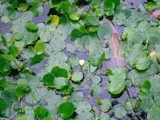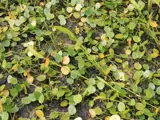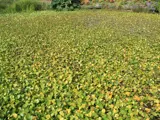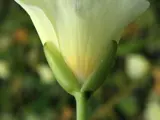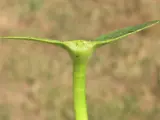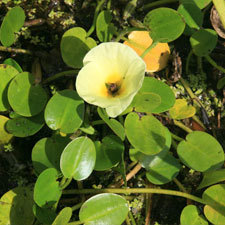 Water poppy
Water poppy
Common name: Water poppy
Botanical name: Hydrocleys nymphoides
Management programme: Eradication
Water poppy is native to Venezuela and Brazil. It was introduced to New Zealand through the ornamental aquatic trade and was recorded as naturalised in New Zealand by 1988.
Why is it a pest?
- Spreads by people moving the plants between waterways.
- Water poppy grows extremely fast, outcompeting native aquatic plants and quickly forming dense floating mats that shade and crowd out submerged aquatic plants.
Where is it found?
- Likes slow moving, stagnant water of ponds, streams, farm dams and lake margins. Prefers areas where water is less than two metres deep.
- There is currently one active site in the Tauranga area.
What does it look like?
- Leaves are thick and glossy and quite round. They are green on top and purplish on the underside. The midrib on the underside of the leaf is inflated.
- Leaves and roots grow in clusters along the stems, which float just below the water surface.
- Flowers are pale yellow with three petals and a purple centre. They appear from November to April.
What are the rules?
Eradication
Eradication pests are present in the region but are limited in their size or extent of infestation. The eradication of these organisms is a feasible and cost-effective solution. The Bay of Plenty Regional Council is responsible for their control or eradication from the region. Action may be required from landowners or occupiers to support a control operation.
Note: Council will maintain control and management of Water poppy.
Control options
Control is funded, and carried out, by Bay of Plenty Regional Council. We would like members of the public to let us know of any possible sightings of this plant.
Images

